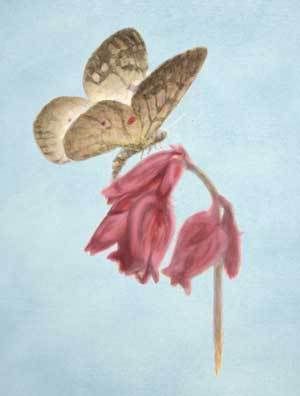|
|
Post by sebbe67 on Jun 10, 2005 10:07:30 GMT
from Santa Cruz Mtns in California, belived to be extinct
|
|
|
|
Post by another specialist on Aug 10, 2005 5:42:07 GMT
|
|
|
|
Post by Agent 204 on Jul 22, 2006 14:18:30 GMT
This is another one that's not on the Red List; I think their coverage of insect subspecies is rather sparse. I haven't found any pics on the net either, though IIRC there's one in Howe's Butterflies of North America.
|
|
|
|
Post by another specialist on Jul 31, 2006 7:51:31 GMT
This is another one that's not on the Red List; I think their coverage of insect subspecies is rather sparse. I haven't found any pics on the net either, though IIRC there's one in Howe's Butterflies of North America. Has anyone got this pic? This is another one that's not on the Red List; I think their coverage of insect subspecies is rather sparse. Yes true but many species are not listed either. |
|
|
|
Post by sebbe67 on Nov 12, 2006 10:25:44 GMT
Strohbeen’s parnassian – Parnassius clodius strohbeeni To an ecologist the word “island” can mean any patch of habitat that is isolated, not just by water. Strohbeen’s Parnassian is one of several butterflies found only on islands of cooler, higher altitude. These butterflies may have evolved at a time when mean temperatures were lower and they may have retreated to upper elevations as temperatures rose. There is also mounting evidence that forests generate their own climate and that cities can have a direct impact on local temperatures. Logging and development in the Coastal Ranges of Northern California may have contributed to altering the local weather pattern too, pushing Strohbeen’s Parnassian out of its previous habitat. No one has seen this North American glasswing butterfly for 18 years, but there is still hope that it may be flying somewhere in the forest above Santa Cruz. Only with great reluctance and after much elapsed time and seearching without a sighting is a species moved from the “presumed extinct” category to the “extinct” category. www.isabellakirkland.com/descend_story.html |
|
|
|
Post by Bowhead Whale on Jan 26, 2007 19:26:35 GMT
What was it like?
|
|
|
|
Post by Melanie on Jan 26, 2007 19:55:42 GMT
It looked similar to the American Apollo (Parnassius clodius)
|
|
|
|
Post by Bowhead Whale on Jan 27, 2007 20:00:14 GMT
American apollo... I don't know it, but I'll make researches. Thanks.
|
|
|
|
Post by Melanie on Jan 27, 2007 20:56:15 GMT
Apollo butterflies belong to most beautiful butterflies in the world and look like that:  |
|
|
|
Post by Bowhead Whale on Jan 30, 2007 19:35:51 GMT
Oh! I see...
|
|
|
|
Post by another specialist on Mar 7, 2008 20:42:50 GMT
|
|
|
|
Post by another specialist on Mar 21, 2008 19:24:33 GMT
 An adult Strohbeen's Parnassian butterfly (Parnassius clodius strohbeeni) perches on a western bleeding heart, its preferred larval host plant. Illustration by Devin Cecil-Wishing. In the wake of San Francisco's doomed dune butterflies—the Xerces, Pheres, and Sthenele—two additional butterflies may have fluttered their last flight within living memory. In the Santa Cruz Mountains, Strohbeen's Parnassian butterfly (Parnassius clodius strohbeeni) glided through the redwoods, frequenting well-lit canyon bottoms and stream zones, unique in itself since other species of Parnassian inhabit higher elevations. Strohbeen's Parnassian was first collected in 1923 by John Strohbeen during a fishing trip in the Santa Cruz Mountains at a site later destroyed by road construction. The butterfly's larval host plant, western bleeding heart (Dicentra formosa), later waned in numbers due to over-collection for the nursery trade. In 1956, entomologist James Wilson Tilden observed the last known living members of this species—a small colony in the vicinity of Bonny Doon atop Mount Ben Lomond. www.baynature.com/v07n04/v07n04_presumedextinct.html |
|
|
|
Post by Sebbe on Oct 7, 2024 8:35:31 GMT
|
|